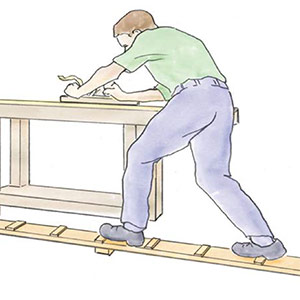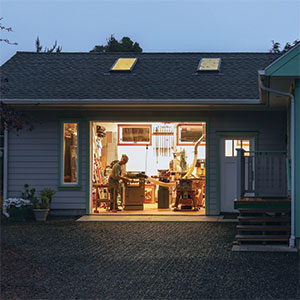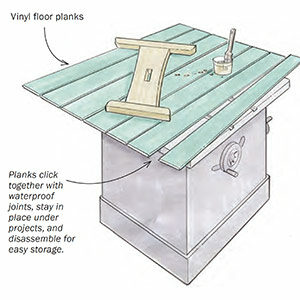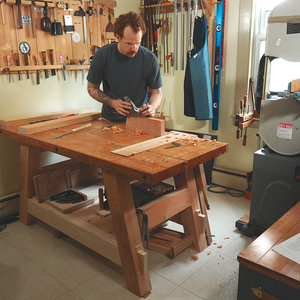All About Workstations

If we were to able to travel back through time and wander through the woodworking shops in ancient Egypt or early New England, we would instantly recognize at least one tool, the workbench. Today, the variety of designs and modifications on the classic workbench has grown to include rolling carts, portable tables, and any number of creative concepts.
The Basics:
• The workbench: The traditional work surface.
• A variety of workstations: Design a bench for special tasks.
The workbench
The workbench is arguably the most important tool of the craft. It is much more than just a table for holding the work at a convenient height (although it does perform that helpful function). The real purpose of today’s workbench is the same purpose it has held for centuries: to hold the work stationary so that we can cut, plane, rout, or sand.
Although they share a common heritage and function, workbenches come in a wonderful variety of shapes and sizes. They range from super-sized benches for assembling large cases to small benches that fit into small places. Hold-down systems include everything from the traditional shoulder and tail vise to built-in pipe clamps.
In Fine Woodworking, a number of woodworking luminaries have presented their favorite workbench designs, including Tage Frid, Frank Klausz, and Michael Dunbar. Many woodworkers reproduce those designs or adapt them to their own purposes.
A variety of workstations
Aside from the traditional workbench, workstations come in many sizes and shapes: sturdy cabinets with a flat work surface, rolling workstations, or sawhorses (simple but indispensable tools in the shop). A workstation can be tailored to the requirements on the operation. Carvers, for example, benefit from a workstation that raises work to a comfortable height, holds a workpiece steady, and allows for access to all sides of a project.
We use sawhorses to make temporary worktables, to hold work for layout, to hold projects at a convenient height for assembly, sanding or finishing. We also use sawhorses occasionally for sawing. In most shops sawhorses are not fine furniture, they’re utilitarian items made from scrap, meant for use, not for display.
The sawhorse has been such a common and constant partner in our shops for so many years it is surprising that we see so many new variations. But we do. There are sawhorses with adjustable height settings and sawhorses made with high-end joinery to increase rigidity and lifespan. The best sawhorses are stackable and portable.
Fine Woodworking Recommended Products

WoodRiver Router Bit Storage Case

Woodriver Rechargeable Desiccant Bag






















Log in or create an account to post a comment.
Sign up Log in